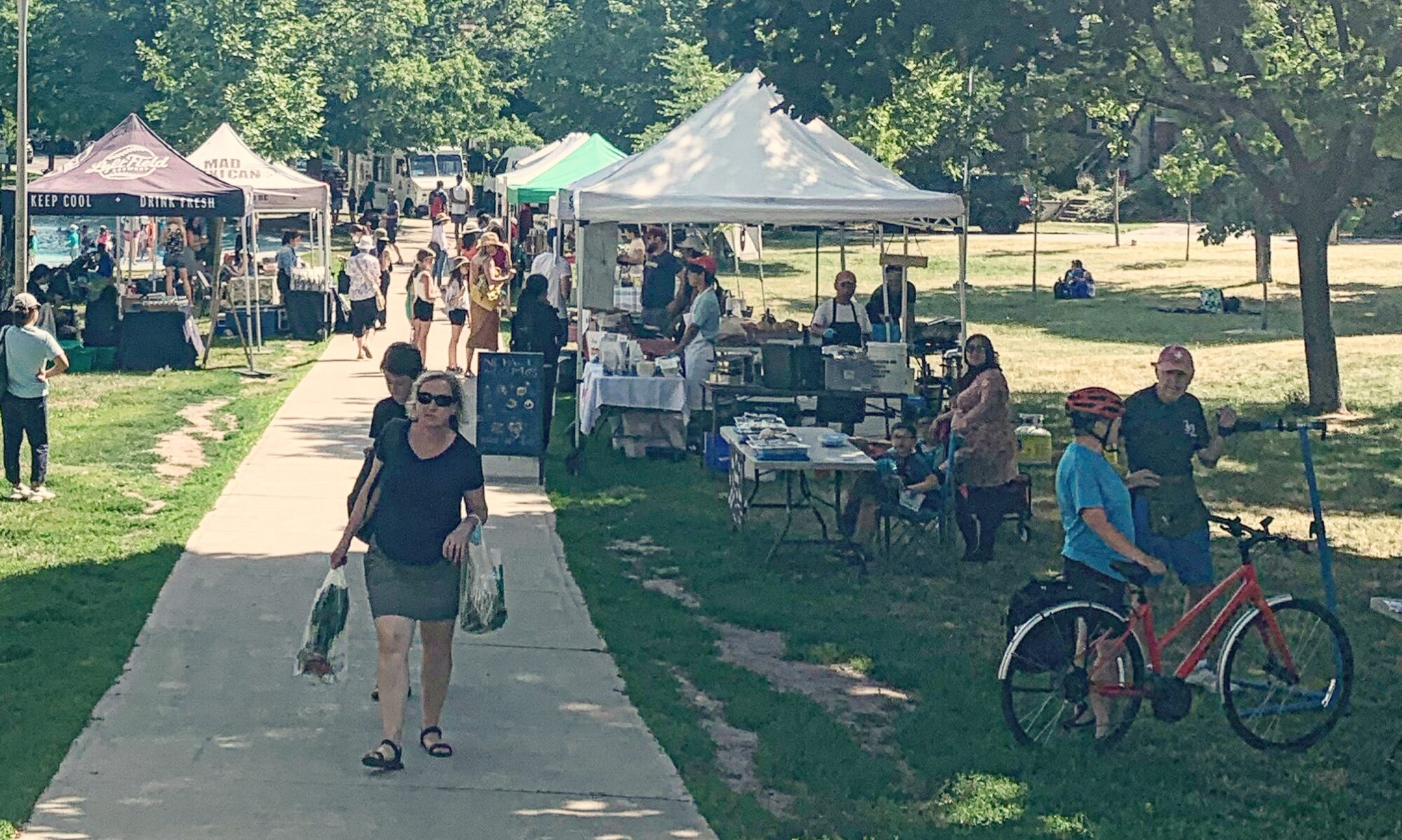From DECA’s Feed The Farmers’ Coordinator, Catherine Porter…
We did it again. But this year, our team of community cooks didn’t just feed 20 farmers a week. They fed 32. What am I talking about?
Well, if you arrived at the Farmers’ Market this year around 5:30 p.m., your nose would have told you. Each Thursday, someone from the neighbourhood arrived with a steaming dish of food, be it pasta or lentil curry to feed the farmers. More often than not two neighbourhood cooks arrived to dole out plates for the swelling number of farmers and their staff.
We started this tradition last year for a number of reasons. The first was pure etiquette. Our market hours run smack into dinner. We didn’t want our farmers to leave for the long drive home with empty bellies. The second was marketing. Happy sellers make regular sellers. And that brings back regular customers. As odd as it sounds, luring farmers to a new market in the big, bad city is not an easy task. We wanted to give farmers every reason to choose us. Our strategy has already worked. A number of the new farmers this year said we were their favourite — mostly because of the community spirit.
Which brings us to the third and most important reason. Community. For us, starting a farmers’ market wasn’t about just eating healthy, local food. It was about building a stronger community in our area. We wanted people to come to the park, buy some strawberries, join in a square dance, watch their kids get transformed into a butterfly via face paint, and chat with their neighbours. The farmers were part of that. What better way to build community than over a plate of hot green curry? Plus, it’s cool to feed the people who feed us. It just feels right. This year, DECA paid a small honorarium to community members who cooked for our farmers. Most of the time, it didn’t cover their costs. They are generous souls. Many cooked more than once. A few cooked three times. We want to thank them all individually. You all helped to make our market a huge success again this year. We think you rock.
If you’d like to throw on an apron and join us in cooking a meal next year, please e-mail me at catherine_porter@rogers.com
Our beloved 2009 DECA cooks include:
Jessica Schmiedchen, Susan Spratley, Shelley Pogue, Mary Egan, Ellen Long, Lorraine Cheng, Laurie Smith, Tanya Geisler, Wayne Chee, Alisha Austin, Diana Gonzalez, Carolyn Rouse, Martha Wallace, Nicola St. John, Ruth Heathcote, Michael Polanyi, Mary Pickering, Alisa Haggert, Andrea Rourke, Robin Forbes, Sarah Eshelby, Sara Heinonen, Catherine Porter and our fabulous baker Mary-Margaret McMahon.




